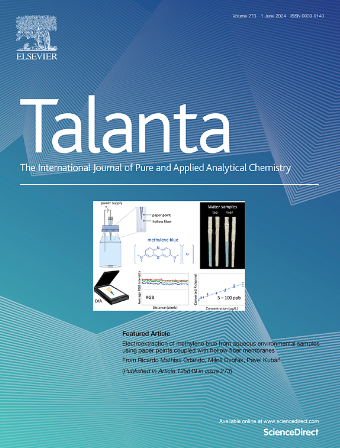Tannic acid-accelerated fenton chemical reaction amplification for fluorescent biosensing: The proof-of-concept towards ultrasensitive detection of DNA methylation
Abstract
As a promising biomarker, the level of methylated DNA usually changes in the early stage of the cancer. Ultrasensitive detection of the changes of methylated DNA offers possibility for early diagnosis of cancer. In this work, a tannic acid-accelerated Fenton chemical reaction amplification was firstly proposed for the construction of ultrasensitive fluorescent assay. Tannic acid was used as reductant to accelerate Fenton reaction procedure through the conversion of Fe3+/Fe2+, generating hydroxyl radicals (·OH) continuously. The produced ·OH oxidized massive non-fluorescent terephthalic acid (TA) to fluorescent-emitting hydroxy terephthalic acid (TAOH). In this way, the fluorescent signal could be greatly enhanced and the sensitivity was improved almost 116 times. The proposed signal amplification strategy was further applied to detect of DNA methylation with the assistance of liposome encapsulated with tannic-Fe3+ complexes. The methylated DNA was firstly captured through the hybridization with its complementary DNA that were pre-modified in the 96-well plate via the combination between streptavidin (SA) and biotin. Then, 5 mC antibody on the surface of liposomes specially recognized and combined with methylation sites, which brought large amount of tannic-Fe3+ complexes to participate Fenton reaction. The fluorescence of generated TAOH was depended on the concentration of methylated DNA. The assay showed good analytical performance for methylated DNA with a limit of detection (LOD) of 1.4 fM. It's believed that tannic acid-accelerated Fenton chemical reaction amplification strategy provides a promising platform for ultrasensitive fluorescent detection of low abundant biomarkers.


 求助内容:
求助内容: 应助结果提醒方式:
应助结果提醒方式:


